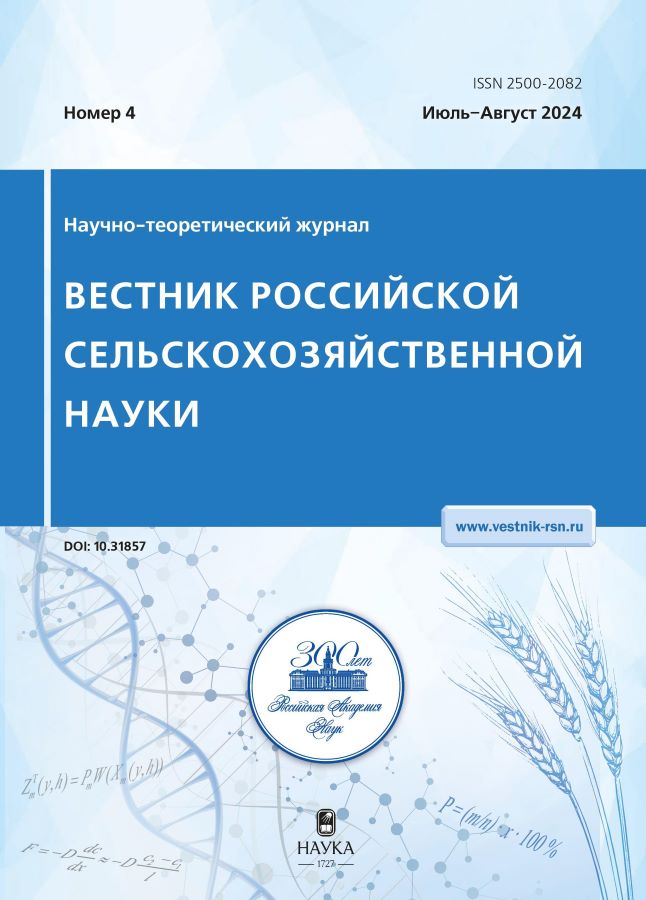Agrotechnical practices for improving the quality of seed stocks in the nursery
- Autores: Semin I.V.1
-
Afiliações:
- Russian Research Institute of Fruit Crop Breeding
- Edição: Nº 4 (2024)
- Páginas: 59-62
- Seção: Crop Production and Selection
- URL: https://vietnamjournal.ru/2500-2082/article/view/659271
- DOI: https://doi.org/10.31857/S2500208224040101
- EDN: https://elibrary.ru/xkyshs
- ID: 659271
Citar
Texto integral
Resumo
The paper presents the preliminary results of an assessment of some agrotechnical techniques for improving the quality of seed stocks for pears based on quince of ordinary VNIISPK breeding. Studies have shown that the use of bedding material introduced into rows during sowing in the form of sphagnum moss or sand contributed to better branching of the primary root of the seedling, and, consequently, the formation of more skeletal roots than in control variants. The morphological structure of the sand favored high aeration and waterproofing with excess moisture in the root zone of the germinating seed. The skeletal root branched better than in the control. However, the main amount of branching was concentrated on the endings of the skeletal root or close to it. The places of branching of skeletal roots from the main root of the seedling often remained open, which subsequently may lead to a decrease in the anchoring of graft-rootstock combinations in the garden. On the other hand, having a high moisture-retaining ability, aeration and antiseptic properties, sphagnum moss had an even more beneficial effect on the young sprout and subsequently contributes to the formation of a branched root system of the seedling with many overgrown roots. The number of skeletal roots and the order of their branching exceeded the control variants by 1.5–2.0 times. Almost the entire skeletal root branched, which is very valuable for survival, plant fixation in the soil, nutrition and moisture supply during the growing season. Based on the conducted research, in order to improve the quality of seed stocks based on quince, when sowing, bedding material in the form of sand or sphagnum moss should be added to the rows, contributing to better branching of the roots of quince seedlings.
Palavras-chave
Texto integral
Sobre autores
I. Semin
Russian Research Institute of Fruit Crop Breeding
Autor responsável pela correspondência
Email: seminigorvniispk.ru@yandex.ru
PhD in Agricultural Sciences
Rússia, Zhilin village, Oryol regionBibliografia
- Borisova O.N., Dolmatov E.A. Morozostojkost’ kornevoj sistemy perspektivnyh klonovyh podvoev dlya grushi // Uspekhi sovremennoj nauki. 2017. № 7. S. 11–13.
- Kas’yanova G.V., Nikol’skaya O.A., Solonkin A.V. Vliyanie podvoev dlya grushi na prizhivaemost’ sortov mestnoj selekcii // Nauchno-agronomicheskij zhurnal. 2023. № 2(121). S. 17–21. DOI: 10.34736/ FNC.2023.121.2.003.17-21
- Lohova A.I., Savin E.Z., Rusanov A.M., Mushinskij A.A. Urozhajnost’ i semennaya produktivnost’ podvojnyh form grushi v usloviyah stepnoj zony Yuzhnogo Urala // Plodovodstvo i yagodovodstvo Rossii. 2020. № 62. S. 39–47. https://doi.org/10.31676/2073-4948-2020-62-39-47 .
- Programma i metodika sortoizucheniya plodovyh, yagodnyh i orekhoplodnyh kul’tur. Orеl. VNIISPK. 1999. 502 s.
- Samus’ V.A., Shkrobova M.A. Perspektivnyj klonovyj podvoj grushi – S1 // Zemledelie i rastenievodstvo. 2018. № 2. S. 46–48.
- Syomin I.V. Tekhnologicheskie aspekty vyrashchivaniya perspektivnyh semennyh podvoev dlya grushi na osnove ajvy obyknovennoj selekcii VNIISPK // Vestnik rossijskoj sel’skohozyajstvennoj nauki. 2023. № 5. S. 52–56. https://doi.org/10.31857/2500-2082/2023/5/52-56
- Tankevich V.V., Sotnik A.I. Agrobiologicheskaya ocenka perspektivnyh podvoev dlya grushi v Krymu // Byulleten’ Gosudarstvennogo Nikitskogo botanicheskogo sada. 2022. № 144. S. 147–154. https://doi.org/10.36305/0513-1634-2022-144-147-154
- Friend A.P., Diack R.N., van Hooijdonk B.M. et al. Scion architecture on dwarfing candidate pear rootstocks // Acta Hortic. 2020. Vol. 1281. PP. 153–162. https://doi.org/10.17660/ActaHortic.2020.1281.22
- Mac an Saoir, S., Johnston S., Kearns J. Pear systems trial, Conference on Quince Adams and Quince EMC rootstocks in N. Ireland // Acta Hortic. 2022. Vol. 1346. PP. 347–352. https://doi.org/10.17660/ActaHortic.2022.1346.43
- Öztürk A. The Effects of Different Rootstocks on the Graft Success and Stion Development of Some Pear Cultivars // International Journal of Fruit Science. 2021. Vol. 21 (1). PP. 932–944. https://doi.org/10.1080/15538362.2021.1948376
- Semin I.V. Evaluation of common quince of VNIISPK breeding as pear seedling rootstock for fruit production in Central Russia // E3S Web of Conferences. 24–25 fevralya. Orel. 2021. 02017. https://doi.org/10.1051/e3sconf/202125402017 (data obrashcheniya 10.01.2024).
Arquivos suplementares












